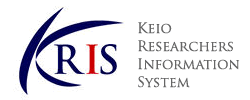-
Affiliation
-
Faculty of Science and Technology, Department of Foreign Languages and Liberal Arts (Hiyoshi)
-
Position
-
Assistant Professor/Senior Assistant Professor

KEIO RESEARCHERS INFORMATION SYSTEM |
Details of a Researcher
このページはJavascriptを使用しています。すべての機能を使用するためにはJavascript を有効にする必要があります。
Ishida, Mako
|
|
Perceptual restoration of degraded speech: The effects of linguistic structure
Ishida M., Arai T., Kashino M.
Attention, Perception, & Psychophysics 2025.08
ISSN 1943-3921
Ishida M., Arai T., Kashino M.
Attention, Perception, & Psychophysics 2025.07
ISSN 1943-3921
Ishida M
Attention, perception & psychophysics 83 ( 6 ) 2675 - 2693 2021.08
ISSN 1943-3921
Ishida M., Arai T., Kashino M.
Frontiers in Psychology (Frontiers in Psychology) 9 ( SEP ) 2018.09
Ishida M.
Proceedings of the Annual Conference of the International Speech Communication Association, INTERSPEECH (Proceedings of the Annual Conference of the International Speech Communication Association, INTERSPEECH) 2017-August 571 - 575 2017
ISSN 2308457X
Perceptual restoration in listeners' first and second language
Ishida, Mako
学事振興資金研究成果実績報告書 (慶應義塾大学) 2020
Perceptual restoration in the first and second language
Mako Ishida, Grant-in-Aid for Early-Career Scientists, Principal investigator
Speech perception and phonemic restoration by native and non-native speakers
Mako Ishida, Grant-in-Aid for JSPS Fellows, Principal investigator
Speech perception (phonemic restoration) by second language learners
Mako Ishida, Grant-in-Aid for JSPS Fellows, Principal investigator
PONS mobil Wortschatztraining Japanisch
Kayo Funatsu-Böhler, Hiroyuki Ota, Karin Adam, Toshiko Arai-Sixt, Bettina Höfels, Mako Ishida, Daisuke Kadono
GLOBAL LEADERSHIP SEMINAR
2025
ENGLISH SPEAKING 2
2025
ENGLISH 2
2025
ENGLISH 1
2025
DISCUSSION IN ENGLISH 4
2025